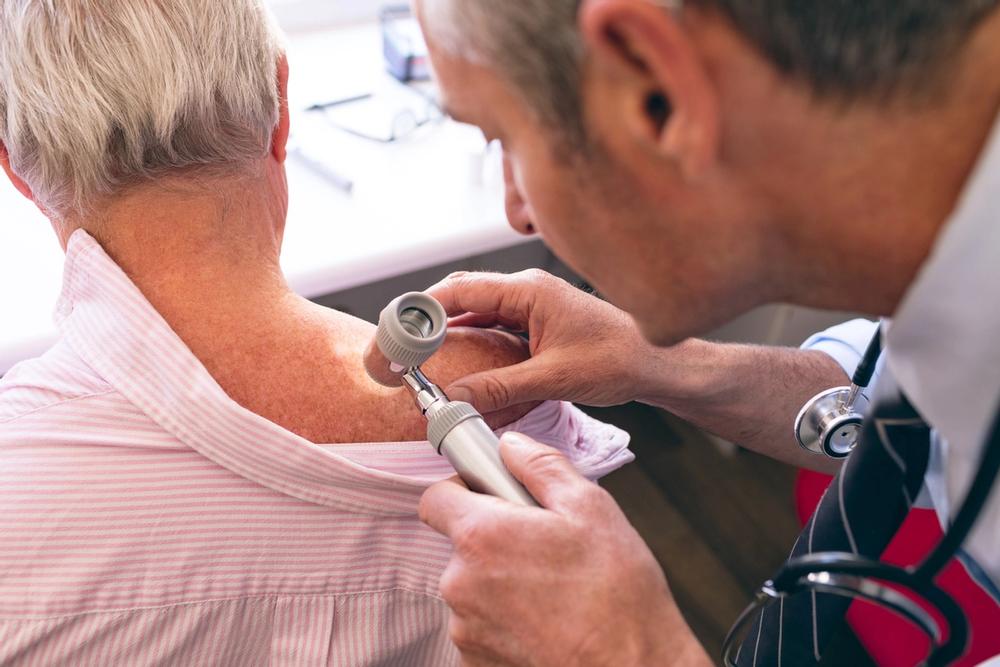Article
Skin-Stretching External Fixation, Negative Pressure Wound Therapy Effective in Treating Large Skin Defects
Author(s):
A case series found that skin-stretching external fixation devices coupled with negative pressure wound therapy was effective in treating large skin defects, suggesting that this method may be a cost-effective and safe alternative to more risky traditional methods.
Adjustable, skin-stretching external fixation devices combined with negative pressure wound therapy (NPWT) was found to be a simple, safe, effective, and cost-efficient way to treat large skin defects, according to a recent case series published in Wounds.
The study sheds light on a potential treatment method for large skin defects, which are typically difficult to treat with traditional methods, such as free flaps, muscle flaps, engineered bilayered skin products, and open reduction and internal fixation. Traditional methods often pose risks for complications or infections when used for large wounds.
Soft tissue defects can be caused by a number of mechanisms, including trauma, open fractures, Morel-Laveallée lesions, burns, extensive tumor resection, soft tissue infections, and pressure injuries. The risk of wound complications increases with the size of soft tissue defects, and defects 200 cm2 or larger are especially at risk for complications caused by free flaps, with complication rates ranging from 7% to 33% of patients and failure rates ranging from 1% to 21%.
The stretching technique involves the soft tissue and skin being gradually stretched using an external fixation device, resulting in wound size reduction and achievements in complete coverage of the defect. The technique is easier to apply than other methods and avoids the need for donor sites and associated donor site complications. Skin stretching has also been shown to promote epithelial regeneration and wound granulation, lessened inflammatory reaction, and controlled superficial soft tissue infections.
The investigators retrospectively observed 7 patients with full-thickness skin defects who were treated with an adjustable, skin-stretching external fixation device and NPWT between January 2014 and December 2017. The mean (SD) age of the patients was 37.43 (10.47) years, and 4 patients were female. The mean (SD) size of the skin defect areas was 226.29 (236.18) cm2; the defects were caused by burns, infection, trauma, surgery, and necrosis.
Prior to receiving the device and NPWT, the patients had all dead, damaged, or infected tissue removed. The wounds were also cleaned with saline and povidone-iodine to remove any free tissue.
Once the skin-stretching device was applied, the wounds were checked daily to ensure the tension was maintained but not too tight. The amount of tension needed increased with the size of skin defects. If ulcerations occurred, skin stretching was slowed. When both sides of the wound made contact, the patients underwent suture surgery and were given standard dressing care.
All of the patients’ wounds healed, demonstrating that the treatment technique was effective. Healing time ranged from 1 to 6 months, resulting in a mean (SD) healing time of 3.29 (1.60) months. The mean (SD) time until patients received a follow-up was 7.72 (2.93) months.
Common complications associated with the skin-stretching technique are necrosis of the skin edge, pin site infection, wound dehiscence, infection of the wound, and pain. The researchers also said that this technique can be time-consuming because the skin has to be stretched gradually over several weeks.
In the present case series, 2 patients developed ulcers resulting from the skin being stretched too quickly. The skin-stretching technique has the potential to be done at home on an outpatient basis assuming that the patient receives appropriate medical care and monitoring.
The investigators listed the single-center, retrospective design of the study and the small cohort size as limitations. Additionally, there were no comparisons between skin-stretching external fixation devices and traditional methods, and the follow-up time may not have been long enough to properly observe scarring and functional recovery.
“Multicenter, randomized controlled trials are necessary for further clinical assessment of this method,” wrote the investigators.
Reference
Peng Y, Zhang W, Bokhari F, et al. Adjustable skin-stretching external fixation device and negative pressure wound therapy application for infected full-thickness skin defects: a case series study. Wounds. 2021;33(7):178-184. doi:10.25270/wnds/2021.178184



